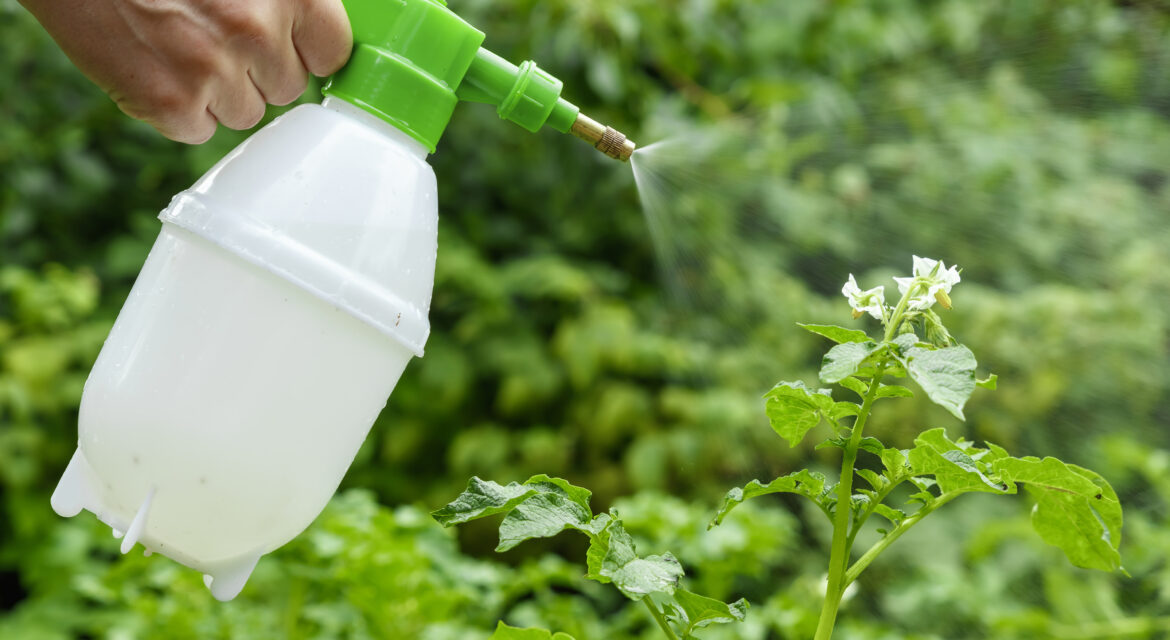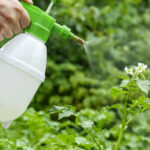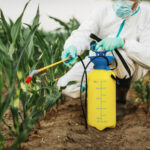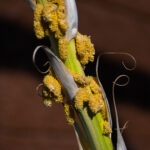No products in the cart.
 10 July 2025
10 July 2025Fungicides vs Bactericides: What are the Main Differences and How to Choose Between Them
Getting to Know the Basics: What Are Fungicides and Bactericides?
Plant diseases caused by pathogens are a great danger to plant health and crop production. Fungi and bacteria are two of the most prevalent types of pathogens that farmers need to deal with. So, its solutions vary: fungicides that will kill or suppress fungi, and bactericides to restrict infection due to bacteria. Fungicides vs bactericides are both meant to protect yields, but where they differ is in application form and timing.
Fungicides vs Bactericides: How They Work
Cracking the fungicides vs bactericides code:
| Feature | Fungicides | Bactericides |
|---|---|---|
| Target | Fungal pathogens (e.g., mildew, rusts, blights) | Bacterial pathogens (e.g., leaf spot, soft rot) |
| Mode of Action | Interrupt cell wall synthesis, respiration, or DNA replication in fungi | Destroy bacterial cell walls or prevent multiplication. |
| Forms | Systemic, contact, translaminar | Usually contact, some systemic options (like copper-based) |
| Application Time | Preventive or early disease onset | Often at early infection or as a preventive measure |
| Examples | Mancozeb, Tebuconazole, Propiconazole | Copper hydroxide, Streptomycin, Kasugamycin |
When to Use Fungicide on Crops
Spray fungicides on crops that exhibit symptoms of fungal infection. These will usually be:
- White powdery spots (powdery mildew)
- Yellowing and black patches (leaf blight)
- Fuzzy or moldy leaf and fruit growth
Spray fungicides preventatively in humid or rainy areas where fungi thrive. Systemic fungicides are longer-lasting, while contact fungicides are best for quick surface application. Application of fungicides to the crop at the correct growth stage must be followed in order to maintain a balance between resistance development and surplus production.
Treatment of Bacterial Diseases in Crops: When to Apply Bactericides
Bacterial diseases tend to be characterized by:
- Water-soaked patches on leaves
- Greasy, darker patches
- Soft rot of stem or fruits
In bacterial disease treatment in crops, bactericides like copper compounds are used widely. However, caution has to be taken as misuse will destroy the soil microflora. Another interesting fact is that bacteria are adaptive organisms, and they develop resistance in a very short period. Diagnosis has to be proper, and action has to be taken promptly in order to exercise control effectively.
Real-World Example: Tomato Crop Management
Bacterial spot and early blight (fungal) are most likely to infect tomato plants in such cases:
- Spray fungicides like Chlorothalonil or Mancozeb during vegetative growth to control blight.
- Spray copper bactericides in wet weather in order to prevent the spreading of bacteria.
The knowledge of the difference between fungicides and bactericides enables you to use appropriate protection for pathotype type without leading to overuse and in a manner that keeps the soil healthy.
Environmental Impact: A Key Consideration
The key difference between fungicides vs bactericides is their environmental persistence and degradability.
- New-era fungicides are biodegradable and produced with minimum residue.
- Copper bactericides, like many others, leave a lasting impact on soil in case they are not used carefully.
Low-impact or biodegradable products are those that can reduce soil toxicity and promote sustainability at large. To read more about environmental impact assessments, you can refer to the MDPI journal on agrochemical behavior.
Are Biocontrols an Option?
Yes. There are several bio-fungicides and bio-bactericides presently available to us that provide us with safer options. Some of them are:
- Trichoderma spp. As a fungus-suppressive agent
- Bacillus subtilis as a means of controlling bacterial diseases
These biocontrols are preventive to apply, saving chemical input without harming the crop.
Integrated Use: Don’t Mix Without a Plan
Most growers wonder: Can I combine fungicides and bactericides in a single spray? Although most products are formulated to be sprayed simultaneously, mixing them without guides will result in:
- Chemical incompatibility
- Inhibited performance
- Crop phytotoxicity
Use a compatibility chart or seek advice from agronomy specialists to avoid costly mistakes.
Best Fungicide and Bactericide Application Practices
Following is a brief checklist for maximum performance
- Correct diagnosis – Fungus and bacteria individually to treat.
- Spray as needed – Never spray unnecessarily.
- Switch between active ingredients – Avoids resistance build-up.
- Follow pre-harvest intervals (PHI) – Especially for export.
- Healthy pollinators & soil – Never spray broad-spectrum while flowering.
Conclusion: Select Smart, Spray Smart
Lastly, knowledge about fungicides and bactericides is not technical information alone — it is getting the right treatment at the right time, for the right reason. Proper application of fungicides vs bactericides is beneficial:
- Prevent yield loss
- Ensures export quality
- Preserves soil biology
- Ensures long-term plant health
In Invade Agro Global, we recommend farmers what is the ideal product to use, but also how to find out about their soil, climate, and crop pattern so that they can make intelligent, eco-friendly decisions.
Frequently Asked Questions (FAQs)
1. What is the primary difference between fungicides and bactericides?
Fungicides and bactericides differ in terms of the pathogen against which they are used. Fungicides are used to control fungal diseases like mildew and rust, while bactericides are used to control bacterial diseases like leaf spot and bacterial blight.
2. When do I apply fungicide to my plants?
Treat with a fungicide if you have diagnosed a fungal infection — usually if you notice powdery coverings, brown spots, or clusters of spores. Use preventatively or at the first sign of symptoms, especially in rainy or wet weather, for best effect.
3. What are typical signs of bacterial crop diseases?
Use of bacterial disease on crops is required if you observe soft rot, water-soaked lesions, greasy leaf blight, or wilt not due to fungi. Laboratory diagnosis is ideal, but skilled agronomists can assist with early diagnosis.
4. Can I use fungicides and bactericides in the same spray?
Although there are some available on the market that package both, it is not necessarily optimal to mix them. Check compatibility labeling, talk with your agronomist, and steer away from tank mixes that will lower performance or harm plants.
5. Are biocontrol products superior to chemical bactericides or fungicides?
Biocontrols such as Trichoderma or Bacillus subtilis are environmentally friendly and do not result in the development of resistance. But during unfavorable outbreaks, the ideal one is an integrated system that contains both biologicals and chemicals (if needed).
[xs_social_share]



